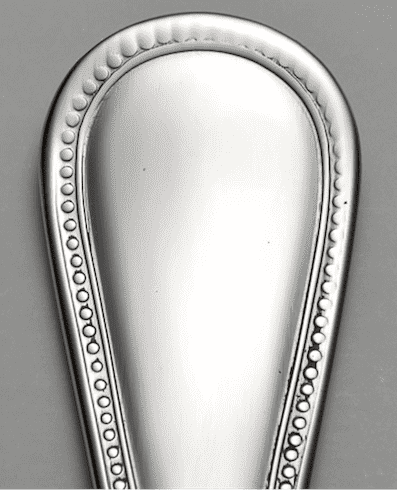Flatware Buying Guide: Finishing Quality
Finishing quality is a major consideration and there is a wide range of “quality levels” in the marketplace. Cheap flatware is often characterized by a lack of proper finishing, not only on the surface, but also on the edges and in-between fork tines. Poor embossing and over buffing can also cause imperfections in pattern detail that make the pieces look inconsistent and of poor quality. Check the pattern detail up close, either in person or enlarged pictures on the web, and look for under-buffed dull areas, over-buffed washed out areas, un-buffed pits & blemishes or rough edges. When shopping on the web the companies that produce good quality have great pictures and those who do not tend to hide that with poor quality photos. Good quality flatware should not have any of these flaws. Price and brand are not always the best indicator of quality, especially with all of the outsourcing that has taken place in the past 20 years, so check carefully before you buy!

Bad pattern detail

Tool or buffing defect
In an effort to increase profits, many brands have switched from high quality 18-10 stainless steel to lower quality 18-0 material. What do these numbers mean? The first number, the 18 refers to the Chromium content of the stainless steel, the primary alloying element that make it “stainless steel”. The second number refers to the nickel content of the grade of stainless steel. Nickel is the alloying element that gives the metal its luster and decreases its susceptibility to pitting, rusting and staining over time. Nickel is expensive and not required by law, therefore many brands and manufacturers have cut costs by making this substitution in the hope that customers will not know the difference. Fortunately, you now do!
People in general are much more conscious these days about where their products are made. Concerns relating to health and safety of the products themselves, the ethical nature of the companies that are producing them, the environmental implications relating to the manufacturing process and transportation of the products and other socio-economic issues are of increasing concern to many. International standards require that all flatware is clearly marked with country of origin on the packaging and in most cases on the product itself. This will allow you to make an informed responsible decision that you can be proud of on all levels.
